 home / Insecta · vabzdžiai / Coleoptera · vabalai / Coccinellidae · boružės / ~ Coccinellidae pupae · boružių lėliukės
home / Insecta · vabzdžiai / Coleoptera · vabalai / Coccinellidae · boružės / ~ Coccinellidae pupae · boružių lėliukės

-
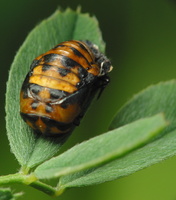 Coccinella septempunctata pupa · septyntaškė boružė, lėliukė
Coccinella septempunctata pupa · septyntaškė boružė, lėliukė
-
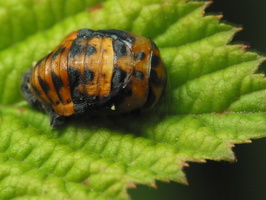 Coccinella septempunctata pupa · septyntaškė boružė, lėliukė
Coccinella septempunctata pupa · septyntaškė boružė, lėliukė
-
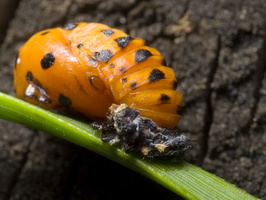 Coccinella septempunctata pupa · septyntaškė boružė, lėliukė
Coccinella septempunctata pupa · septyntaškė boružė, lėliukė
-
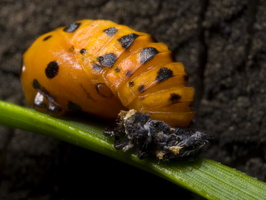 Coccinella septempunctata pupa · septyntaškė boružė, lėliukė
Coccinella septempunctata pupa · septyntaškė boružė, lėliukė
-
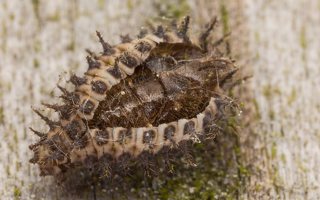 Coccinellidae pupa exuviae · boružės lėliukės išnara
Coccinellidae pupa exuviae · boružės lėliukės išnara
-
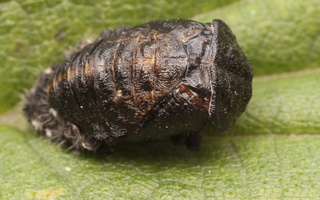 Coccinellidae pupa · boružės lėliukė
Coccinellidae pupa · boružės lėliukė
-
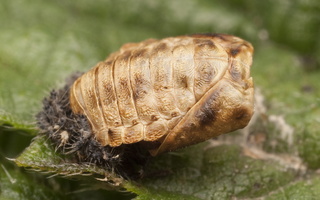 Coccinellidae pupa · boružės lėliukė
Coccinellidae pupa · boružės lėliukė
-
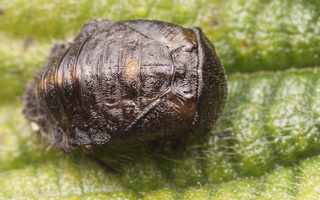 Coccinellidae pupa · boružės lėliukė
Coccinellidae pupa · boružės lėliukė
-
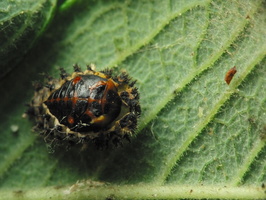 Exochomus quadripustulatus pupa · keturdėmė boružė, lėliukė
Exochomus quadripustulatus pupa · keturdėmė boružė, lėliukė
-
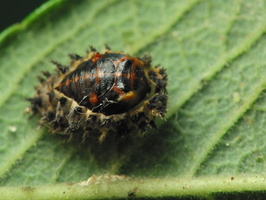 Exochomus quadripustulatus pupa · keturdėmė boružė, lėliukė
Exochomus quadripustulatus pupa · keturdėmė boružė, lėliukė
-
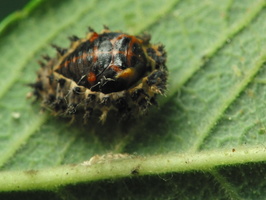 Exochomus quadripustulatus pupa · keturdėmė boružė, lėliukė
Exochomus quadripustulatus pupa · keturdėmė boružė, lėliukė
-
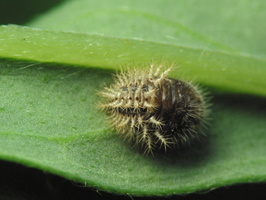 Subcoccinella vigintiquatuorpunctata pupa · dvidešimtketurtaškė boružė, lėliukė
Subcoccinella vigintiquatuorpunctata pupa · dvidešimtketurtaškė boružė, lėliukė
-
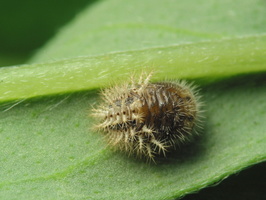 Subcoccinella vigintiquatuorpunctata pupa · dvidešimtketurtaškė boružė, lėliukė
Subcoccinella vigintiquatuorpunctata pupa · dvidešimtketurtaškė boružė, lėliukė
~ Coccinellidae pupae · boružių lėliukės
- ladybird beetles, lady beetles, ladybirds, ladybugs
- Marienkäfer
- boružės
- mārīšu dzimta
- biedronkowate
- en.wikipedia.org/wiki/Coccinellidae
- ukbeetles.co.uk/coccinellidae-1
- https://earthlife.net/lady-bugs-coccinellidae
Though the pupa is attached at one end and in a state of morphological change, it is not always immobile and will flick its anterior (head) end up and down if annoyed. This action possibly evolved as a deterrent to Hymenopteran pupal parasites, making it difficult for them to oviposit (lay their eggs). Emergence generally occurs after about one week, depending on temperature. The pupal skin splits along the back and the adult climbs out, then rests while expanding and drying its wings.